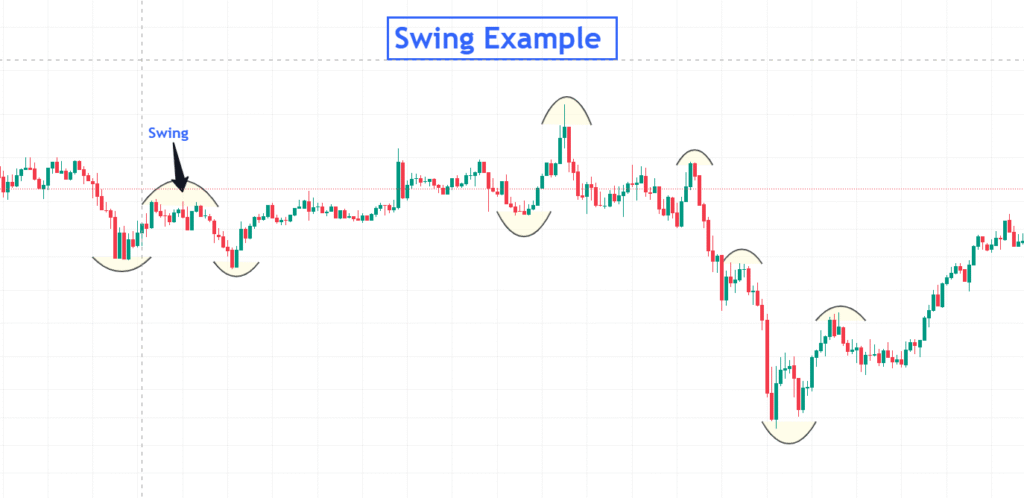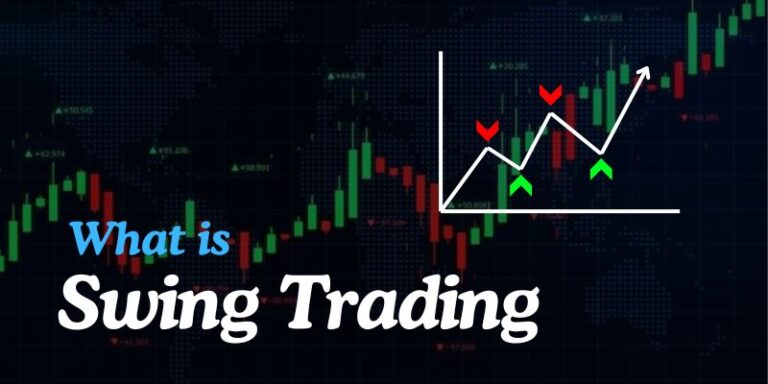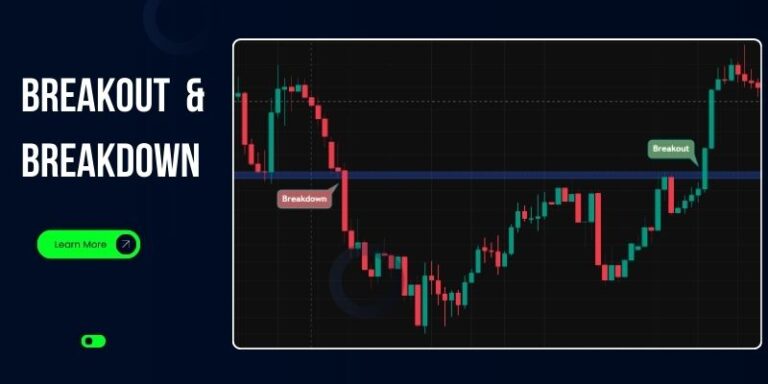What is Swing? Meaning in Stock Market with Example
Introduction: What Does ‘Swing’ Mean in Trading?
In the stock market, prices move up and down regularly. These price moves — either upward or downward — are called “Swings.”
Understanding these What is swings is very important for traders because it helps them decide the right time to buy or sell stocks and capture profits.
Table of Contents
How Swings Work in the Stock Market
Whenever a stock price moves from a low to a high, and falls 50% or more from the high, the curve that forms above is called an up swing.
And when it falls from a high to a low, and rises 50% or more from the low, the curve that forms below is called a down swing.
This price change can last for a few minutes, a few hours, or a few days – depending on market conditions.
Simple Example of a Swing

Why Understanding Swings is Important
Knowing about what is swings is important because: It helps in identifying profitable entry and exit points. You can avoid unnecessary trades in a sideways market.
It forms the base for many trading styles like Swing Trading, Intraday Trading, Positional Trading, and even Scalping.
📌 Whether you’re doing scalping (quick trades in minutes), intraday (same day trades), swing trading (holding for a few days), or positional trading (holding for weeks/months) — the concept of swings works everywhere.
In every trading style, price moves up and down in swings, and smart traders catch these moves according to their strategy and time frame.
If you want to trade smartly, understanding swings is the first thing you should master.
What’s Next?
Now that you know what a swing is, it’s time to understand Swing Trading — a popular trading style based on these price swings.
👉 Check our next post, we’ll explain What is Swing Trading ? with a simple example so you can start applying this knowledge in real trades.
Stay tuned and follow our blog! 📈🔥





